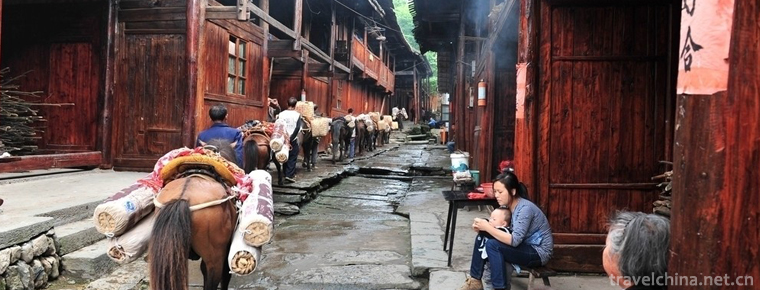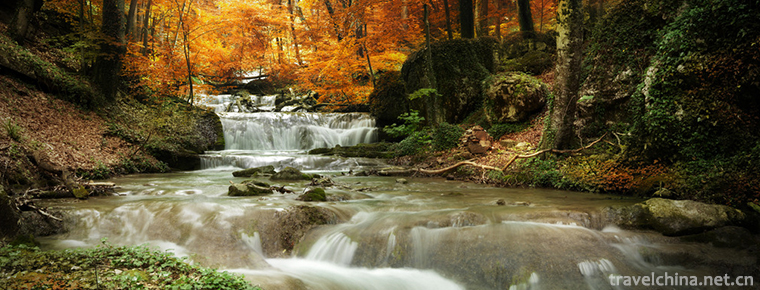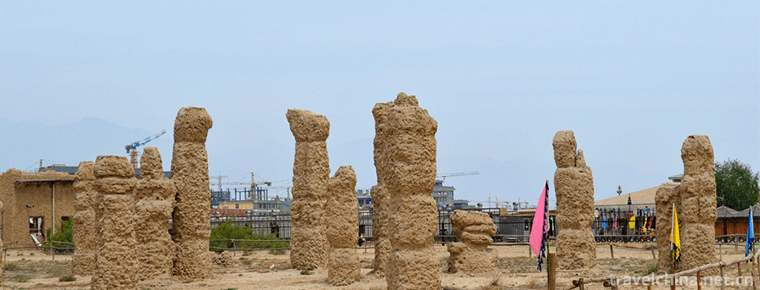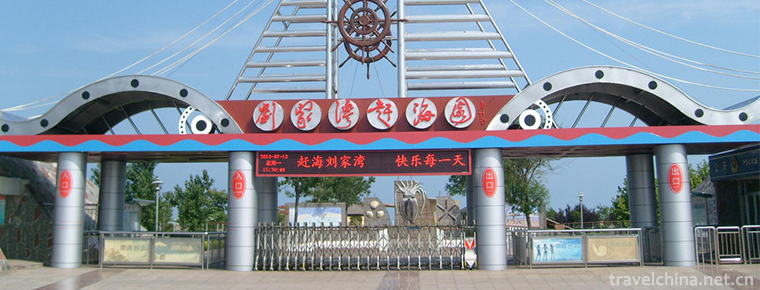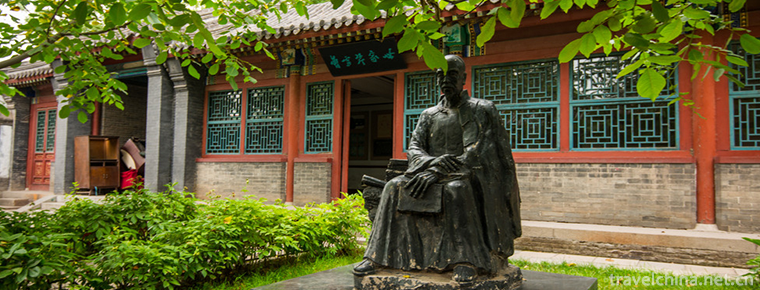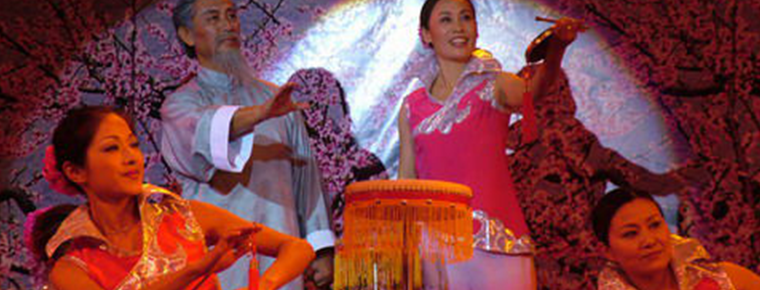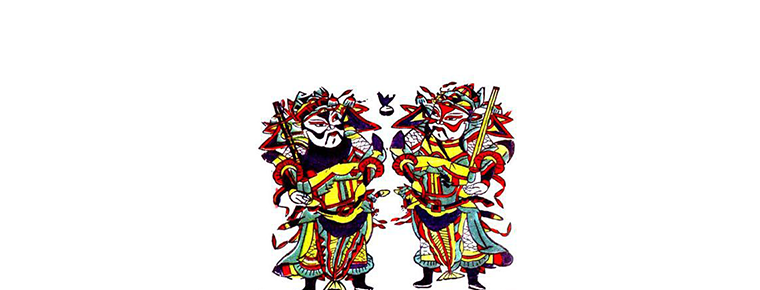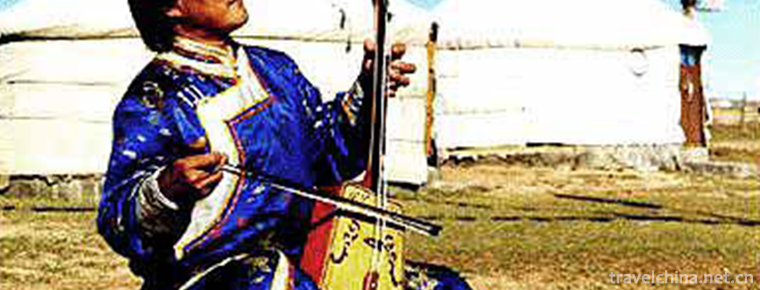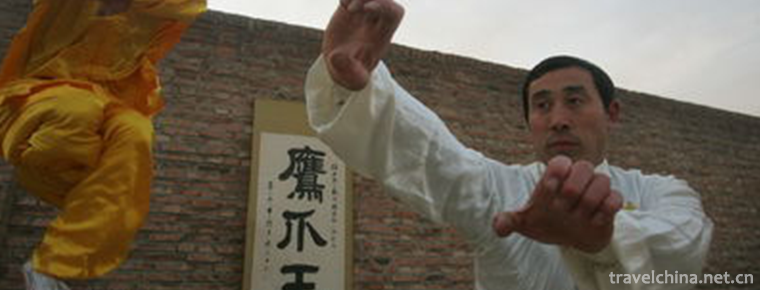Yandi Festival
Yandi Festival
"Yandi Mausoleum Festival" is divided into official and folk sacrifices. Folk sacrifice began in summer, official sacrifice originated in Zhou, and Emperor sacrifice originated in Tang Dynasty and prospered in Song Dynasty. The official sacrificial activities have evolved up to now, mainly including public sacrificial ceremonies and sacrificial ceremonies. Folk sacrifices, commonly known as "Chaotianzi Tomb", are often held in various forms to worship Emperor Yan in order to pray for good weather and good harvest.
Since the reform and opening up, with the increasing popularity and influence of Yandi Mausoleum at home and abroad, "Yandi Mausoleum Ceremony" has become an important carrier for inheriting Yandi and Huang culture and condensing national feelings.
On May 20, 2006, the Mausoleum of Emperor Yan was approved by the State Council to be included in the first batch of national intangible cultural heritage list.
Historical Origin
Emperor Yan is one of the ancestors of the Chinese nation. What we call "Yan Huang" refers to Emperor Yan Shennong and Emperor Huang Xuanyuan. In historical legends, Emperor Yan Shennong was an outstanding tribal leader in ancient China and the founder of farming culture. According to historical records, Emperor Yan Shennong was "born in Lixiang, so-called Lishan family", "longer than Jiangshui, because he thought his surname was King Huode, so called Emperor Yan". Emperor Yan and his ancestors of the primitive clan created rich material and spiritual wealth in their long-term production and practice, which laid the initial material and cultural foundation for the birth of Chinese civilization and the formation of the Chinese nation. He "began to make rakes and teach people to cultivate; tasted all kinds of grass and invented medicine; Japan and China were the cities, advocating trade; curing hemp for cloth, making clothes; stringing wood for arc, cutting wood for target; making pottery for utensils, making heavy axes; cutting Tung for piano, practicing silk for strings; building houses, and dwelling on terraces". Emperor Yan's perseverance, perseverance, self-improvement and selfless dedication have condensed into the soul of the Chinese nation and the source of its enduring strength. In his later years, Emperor Yan cured the disease for the people and relieved the people's pain. He came to Hunan to collect medicines. He died at the Chaling Tomb at the end of Changsha Tea Township because he mistasted "Broken Intestine Grass", which is the Luyuan Town, 17 kilometers west of Yanling County, Zhuzhou City, Hunan Province. In order to commemorate his merits, the mausoleum of Emperor Yan Shennong, or Emperor Yan, was built here.
Emperor Yan's Mausoleum has a history of more than 1000 years since it was built five years ago by Emperor Qiande of the Song Dynasty. With the rise and fall of dynasties, the temple of Emperor Yan has gone through vicissitudes of life, repeatedly destroyed and destroyed. The major repairs recorded in historical materials are: once in the Song Dynasty, three in the Ming Dynasty, nine in the Qing Dynasty and four in the Republic of China. After the founding of New China, Yandi Mausoleum was listed as a key cultural relic protection unit in Hunan Province. On the eve of New Year's Eve in 1954, because of PILGRIMS'sacrifices and incense burning candles, the colorful flags in the hall were inadvertently ignited, and the main hall of Emperor Yan's Mausoleum and the ceremonial Pavilion were turned into ashes. A salvage restoration was carried out that year. When the "Cultural Revolution" came, the mausoleum and its subsidiary buildings were destroyed and all but the mausoleums were razed to the ground. Until the Third Plenary Session of the Eleventh Central Committee of the Communist Party of China, it became the strong desire of the descendants of Yandi and Huangdi to restore the mausoleum of Yandi Emperor. Restoration conditions are becoming more and more mature. On June 28, 1986, under the chairmanship of the People's Government of Lingxian County (now Yanling County), the restoration of the mausoleum was officially started. The project continued until October 1988. After more than two years of renovation, the scale of the building has expanded slightly. The whole building covers an area of about 3836 square meters. After restoration, the mausoleum of Yandi Emperor is divided into five parts according to the architectural style of the Qing Palace: the first is the noon gate, the second is the ritual pavilion, the third is the main hall, the fourth is the tombstone pavilion, and the fifth is the tomb. More than 30 natural and cultural landscapes have been restored and newly built outside the hall, including Shennong Hall, Pilgrimage Square, Imperial Stele Garden, Huangshan Stele Forest, Angel Mansion, Holy Torch Platform, Yongfeng Platform, Deshenglin, Chongde Fang, Luyuan Pavilion and Pharmaceutical Pool. There are sacred sites such as the Mausoleum.
All dynasties attached great importance to the sacrificial activities of Yandi Mausoleum. According to Song Luo Bi's Road History, the Mausoleum of Emperor Yan had offered sacrifices since the Tang Dynasty and dropped out in the Five Dynasties. Zhao Kuangxu, Taizu of the Song Dynasty, built a temple fair in the fifth year of Qiande (967 A.D.). It was a rule that "at the age of three, the rate was normal". In the Yuan and Ming Dynasties, although there were no definite regulations, the sacrificial activities were not interrupted. After entering the Qing Dynasty, the sacrificial rites of Yandi Mausoleum became more frequent, solemn and prosperous. Folk sacrifices have been incense-burning for thousands of years.
The overall planning area of the Lingling Mausoleum of Yandi is 118.6 square kilometers, and the core area is 5 square kilometers. It is a national key cultural relic protection unit, a national patriotic education demonstration base, a national patriotic education base of the Overseas Chinese Federation, a cross-strait exchange base, a national scenic spot and a national 4A-level tourist attraction. The Mausoleum of Emperor Yan has become a base for seeking roots and admonishing ancestors, traveling and sightseeing, studying the culture of Emperor Yan and conducting patriotic education.
Sacrificial contents
From ancient times to the present, the sacrificial ways of Yandi Mausoleum can be roughly divided into official sacrifices (also known as imperial sacrifices, grand sacrifices, public sacrifices, etc.), folk sacrifices and spiritual sacrifices.
Official sacrifices. Official sacrifices in successive dynasties refer to imperial sacrifices. In the event of national events, sacrificial ceremonies should be performed, and the emperor sent officials to attain the mausoleum and commemorate the sacrifices. Official sacrifice has evolved to the present day, mainly including public sacrifice and public sacrifice. Public sacrifices are generally sponsored by government organizations, and government administrative officials act as the chief sacrificial officers, accompanied by the main representatives of all relevant parties, and public participation; the ceremony of public sacrifice is generally held by the leaders of the sacrificial units and groups, accompanied by the representatives of the sacrificial units and groups concerned and participated in the sacrifices. The agenda of modern public offerings and sacrificial ceremonies is generally standardized and fixed, usually consisting of rituals such as offering incense, offering baskets, offering offerings, reading sacrifices, opening the door of noon, etc.
Folk sacrifice. Most of the time is at the beginning of each month (the first day of the first month) and the fifteenth month (the fifteenth year) as well as traditional festivals. Generally speaking, a group, a family or an individual joins together to celebrate a major celebration or a special event, and chooses the auspicious day to celebrate a memorial ceremony. The agenda and contents of folk sacrifices are mostly sacrifices before tombs, worship by incense, kneeling to pray for blessings, vows, rewards and so on.
The sacrifice of gods. Believing in gods is the inheritance and accumulation of Chinese traditional culture for thousands of years. The sacrifice of gods is a kind of psychological need and pursuit for all good men and women to believe in gods. To sacrifice the mausoleum of Emperor Yan is the embodiment of people's sacrifice and worship of Emperor Yan Shennong as a god.
With the deepening of the cultural value of the Yandi Mausoleum sacrifice and the development of the sacrificial content, its form has evolved from the traditional procedures of paying tribute, offering incense and burning the ghost to the traditional and modern sacrificial forms of cultural sacrifice, material sacrifice, music sacrifice, dragon sacrifice, drum sacrifice, dance sacrifice, medicine sacrifice and God sacrifice. Literary sacrifices include sacrifices, odes, inscriptions, etc. Literary sacrifices are mostly for ancestors, memorials, praises, prayers and the expression of the hearts of the sacrificials. Traditional sacrificial writing is usually written on yellow silk cloth. Modern sacrificial writing is mostly written on exquisite folded rice paper, which is read by the main sacrificial in front of the mausoleum, then burned in incense burner. The burning sacrificial culture serves as smoke to comfort the ancestor of Emperor Yan in the spirit of heaven. Wish our country prosperous and prosperous. In folk sacrifices, oral sacrifices and psychological recitation are the most common.
As an ancient Chinese folk culture, in the long historical process, "Yandi Mausoleum Ceremony" has become a comprehensive cultural carrier covering many fields such as music, dance, literature, etc. Nine dragons on the torch stand at the memorial site are arranged radially with the torch as the center, and the torch is ignited by a flame from their mouth. The top Yandi sacred fire commemorates the use of the popular fire of Shennong, the Yandi Emperor; the "human dragon" which is performed without props at the scene reflects the idea that Chinese people are both the descendants of dragons and the descendants of dragons; on the square of Shenlong Hall, five different colors of dragons, yellow, green, black, white and red, perform in accordance with the orientation of the "five elements". It contains rich connotations of Chinese traditional culture.
The above content comes from Zhuzhou Net's National Intangible Cultural Heritage-Yandi Mausoleum Ceremony
Inheritance Significance
"Yandi Mausoleum Ceremony" has been selected as the first batch of national intangible cultural heritage records, "the world's most influential ten major pro-cultural events", and Hunan Province's "ten most attractive intangible cultural heritage projects . Since 1988, a total of 12 million descendants of Yanhuang have come to mourn their ancestors and pay tribute to their mausoleums at home and abroad. Yandi Mausoleum has become the most influential and inspiring national holy place. It is an important united front platform for promoting Chinese culture, uniting and cohesing overseas compatriots, realizing national identity and cultural heritage, and promoting the peaceful reunification of the motherland.

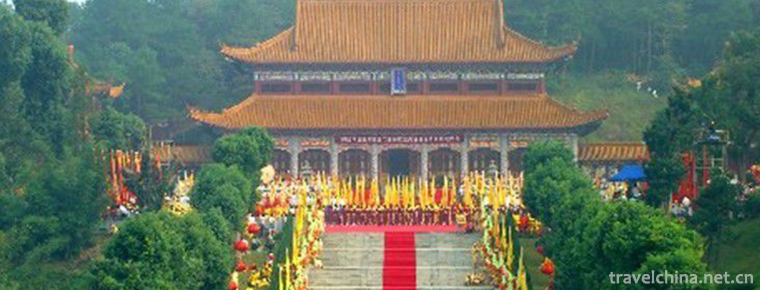
-
Tea horse ancient road
Tea-horse ancient road refers to the folk international trade.
Views: 216 Time 2018-10-17 -
Mountain Yuntai
Yuntai Mountain is a world geological park, national AAAAA-class tourist attraction and national scenic spot, located at the junction of Xiuwu County in Jiaozuo City, Henan Province.
Views: 145 Time 2018-10-29 -
Zhenbeibao West Film City
Zhenbeibao Western Film City, located in Yinchuan City, Ningxia Hui Autonomous Region, is a national AAAAA-level tourist attraction integrating sightseeing, entertainment, leisure, catering and shoppi.
Views: 146 Time 2018-12-12 -
Liu Jiawan Chaihai Garden
Located on the eastern coast of Taolu Town, Donggang District, Rizhao City, Liujiawan Chaihai Garden is a national AAAA-level tourist attraction, a popular science education base, and a core scenic sp.
Views: 112 Time 2018-12-26 -
Lao Leshan Tourist Scenic Spot
Lao Leshan is located in the south of Henan Province, 9 kilometers southwest of Zhumadian City and 8 kilometers west of Queshan County. National Highway 107.
Views: 135 Time 2019-01-29 -
Rong Guo Fu
Rongguofu, located in Zhengding County, Shijiazhuang City, Hebei Province, is a group of archaized buildings with the culture of the late Ming and early Qing Dynasties as the background. In 1986.
Views: 194 Time 2019-02-07 -
Gongs and drums
The Gong and drum books used to be called "Taibaoshu", "Taibao" is derived from the activities of "Taibu" in the countryside of Shanghai suburbs and counties, which seeks.
Views: 119 Time 2019-05-15 -
Wood Engraving Picture
In Chinese folklore, New Year's pictures are the symbol of the New Year. If they are not pasted, they will not be counted as the New Year's Day. New Year pictures are not only decorations for festival.
Views: 385 Time 2019-06-05 -
Mongolian Matouqin Music
Horsehead Qin is a typical representative of Mongolian music culture. Whether it is its shape, production material, sound quality, timbre, music expression style and performance method, it embodies th.
Views: 137 Time 2019-06-05 -
Eagle Claw
Eagle Claw Turn Boxing is a new type of Chinese traditional boxing, which is derived from the Eight Flash Turn. It is also a famous Chinese national master, Mr. Chen Zizheng (1878-1933) (from Li Linzh.
Views: 183 Time 2019-07-14 -
Introduction to Chinese embroidery
Embroidery, known as needle embroidery in ancient times, is a kind of technology that uses embroidery needle to guide color thread, embroiders the designed patterns on textiles, and forms patterns with embroidery traces. In ancient times, it was called "Juju" and "pinju"..
Views: 100 Time 2020-12-12 -
Leshan transportation
Leshan City has convenient transportation. In the 12th Five Year Plan, Leshan City proposed to implement the "100 billion yuan transportation project", including "two airlines (comprehensive development of Minjiang aviation and power and Leshan Airport).
Views: 348 Time 2020-12-17
